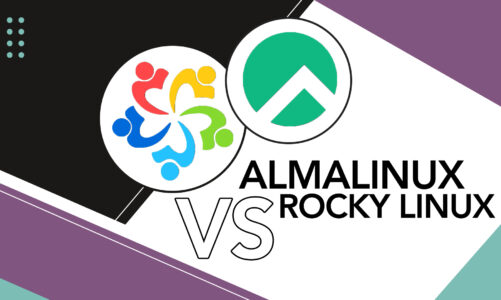CentOS and Red Hat Enterprise Linux (RHEL) are two well-known operating systems within the realm of Linux. They both have similar features, and CentOS is often referred to as the community version of RHEL. But is CentOS exactly the same as RHEL?
To help you make sense of these two popular distributions, we will be comparing and contrasting their various features, including their development processes, community involvement, use cases, and commercial support.
What is CentOS?
CentOS, an acronym for Community Enterprise Operating System, is a widely-used open-source Linux distribution that offers a complimentary, enterprise-grade, community-backed computing platform. It is designed to be a high-quality alternative to expensive, commercial Linux distributions like Red Hat Enterprise Linux (RHEL).
What is RHEL?
Red Hat Enterprise Linux, commonly known as RHEL, is a Linux distribution developed by Red Hat. RHEL is a commercial product aimed at the enterprise market, offering robust performance, security, and support. Red Hat charges subscription fees for RHEL, which include access to software updates, security patches, and technical support.
Comparing CentOS and RHEL
1: Origins and Development
Both CentOS and RHEL share a common origin. CentOS is derived from the sources of RHEL and is designed to be a free alternative for users who want the stability and features of RHEL without the associated costs. The primary differences between CentOS and RHEL lie in their development, support, and licensing models.
2: Software Updates
While CentOS and RHEL have similar functionality and share the same base code, there are differences in how updates are managed. RHEL provides more frequent updates, including security patches and bug fixes, while CentOS updates are often released after a delay. This is because CentOS developers must first compile, test, and package updates from RHEL’s source code.
3: Security Features
CentOS and RHEL are both recognized for their strong security capabilities. However, RHEL offers a more comprehensive security package due to its subscription model. RHEL subscribers receive timely security updates, access to the Red Hat Customer Portal, and expert support, which may not be available to CentOS users.
4: Support and Community
CentOS boasts a sizable and engaged community that offers assistance via forums, mailing lists, and various online platforms. Nevertheless, it lacks the comprehensive professional support available with a paid subscription to RHEL. RHEL subscribers have access to dedicated support teams, knowledge resources, and more.
5: Use Cases
CentOS serves as an ideal option for users seeking a dependable, secure, and cost-free Linux distribution backed by a robust community. It caters perfectly to small enterprises, developers, and personal users who do not need the extra support and functionalities offered through an RHEL subscription.
RHEL is the better choice for organizations that require enterprise-level support, robust security, and timely updates. Companies that need a stable operating system with a guaranteed level of support and access to the latest security updates should opt for RHEL.
What is CentOS Stream?
A few years ago, the CentOS Project unveiled a major shift in its development approach by introducing CentOS Stream. CentOS Stream is a rolling-release Linux distribution that serves as the upstream development platform for RHEL. This means that CentOS Stream will receive updates and features ahead of RHEL, providing users with a preview of what’s to come in future RHEL releases.
Implications for CentOS and RHEL Users
The shift to CentOS Stream has some important implications for both CentOS and RHEL users. For CentOS users, the transition means that the traditional CentOS distribution, which closely mirrored RHEL, is being replaced with a more cutting-edge, rolling-release model. This may not be suitable for users seeking a stable, predictable environment, which was one of the primary reasons for choosing CentOS in the past.
For RHEL users, CentOS Stream offers an opportunity to preview and test new features before they are incorporated into RHEL. This enables organizations to more effectively anticipate upcoming RHEL updates and detect potential problems beforehand.
Conclusion
While CentOS and RHEL share the same base code and offer similar functionality, they are not exactly the same. The primary differences between the two lie in their development, support, and licensing models.
CentOS is a free, community-supported alternative to RHEL, making it an attractive option for small businesses and individual users. RHEL, on the other hand, is a commercial product with a subscription model that provides enterprise-level support and security features, making it more suitable for larger organizations with specific support and security requirements.



